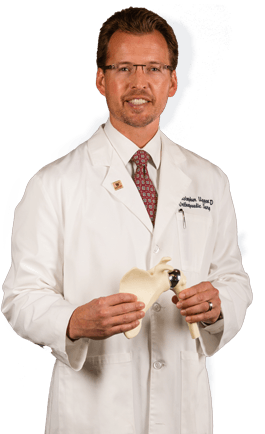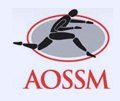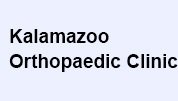Chondral Injuries / OCD
Osteochondritis dessicans is a condition of loosening or detachment of a fragment of cartilage and underlying a bone in a joint. The fragment may be stable, loose, or completely detached from the cartilage or bone. The exact cause for osteochondritis dessicans remains unknown and certain factors such as trauma, fractures, sprains, or injury to the joint are considered to increase the risk of developing the condition. Following the injury or trauma, the bones in the area may be deprived of blood flow leading to necrosis and finally the bone fragment may break off.
Patients with osteochondritis dessicans experience symptoms such as joint pain, stiffness, restricted motion of joints, and locking or catching in the joint.
Your physician may recommend various treatments depending on the stability of the cartilage and age. Goals of treatment are to relieve the symptoms and stop or impede the progression of degeneration of the joint. Non-surgical treatments such as activity modification, anti-inflammatory medications, and immobilization for 1-2 weeks may be recommended if the condition is diagnosed at early stages and if the severity is mild. Arthroscopic surgery may be recommended if the fragment is loose or if there are mechanical symptoms.
The surgical treatment of osteochondritis dessicans can be done using open technique or arthroscopic techniques. Some of the surgical procedures include drilling, bone grafting, open reduction internal fixation, osteochondral grafting, or autologous chondrocyte implantation (ACI).
- Drilling – In this method multiple small holes are drilled into the bone which allows the growth of new blood vessels in the defect area. This promotes blood flow into defect area thereby initiating the healing response and formation of new fibrocartilage cells inside the lesion.
- Open reduction internal fixation – Open surgery is performed in cases where the defected area is difficult to reach with arthroscope. Hence an open incision may be required. In this procedure, an incision is made in front of the joint to allow the surgeon to see the joint and the loose bodies are removed. Internal fixation involves fixing the fragments using internal fixators such as metal screws, pins, or wires.
- Bone grafting – It helps to fill the gap after removal of the dead or necrotic bone. In this procedure bone graft is placed on the damaged site. This procedure may be performed to repair the damaged area or replace the missing bone. Autograft (harvested from the same individual) or allograft (taken from bone bank) may be required to help in the growth of a new bone.
- Osteochondral grafting – The procedure involves transfer of healthy cartilage plugs from the non-weight bearing areas of the joint and transferring into the damaged areas of the joint in mosaic pattern. It allows the newly implanted bone and cartilage to grow in the defected area. Grafts may be taken from the same individual (autograft) or from a donor or bone bank (allograft).
- Autologous chondrocyte implantation (ACI) – In this procedure healthy cartilage cells are harvested from the non-weight-bearing joint of the patient and cultured in laboratory. The cultured cartilage tissue patch will be implanted into the defected area which also promotes the growth of new cartilage.













